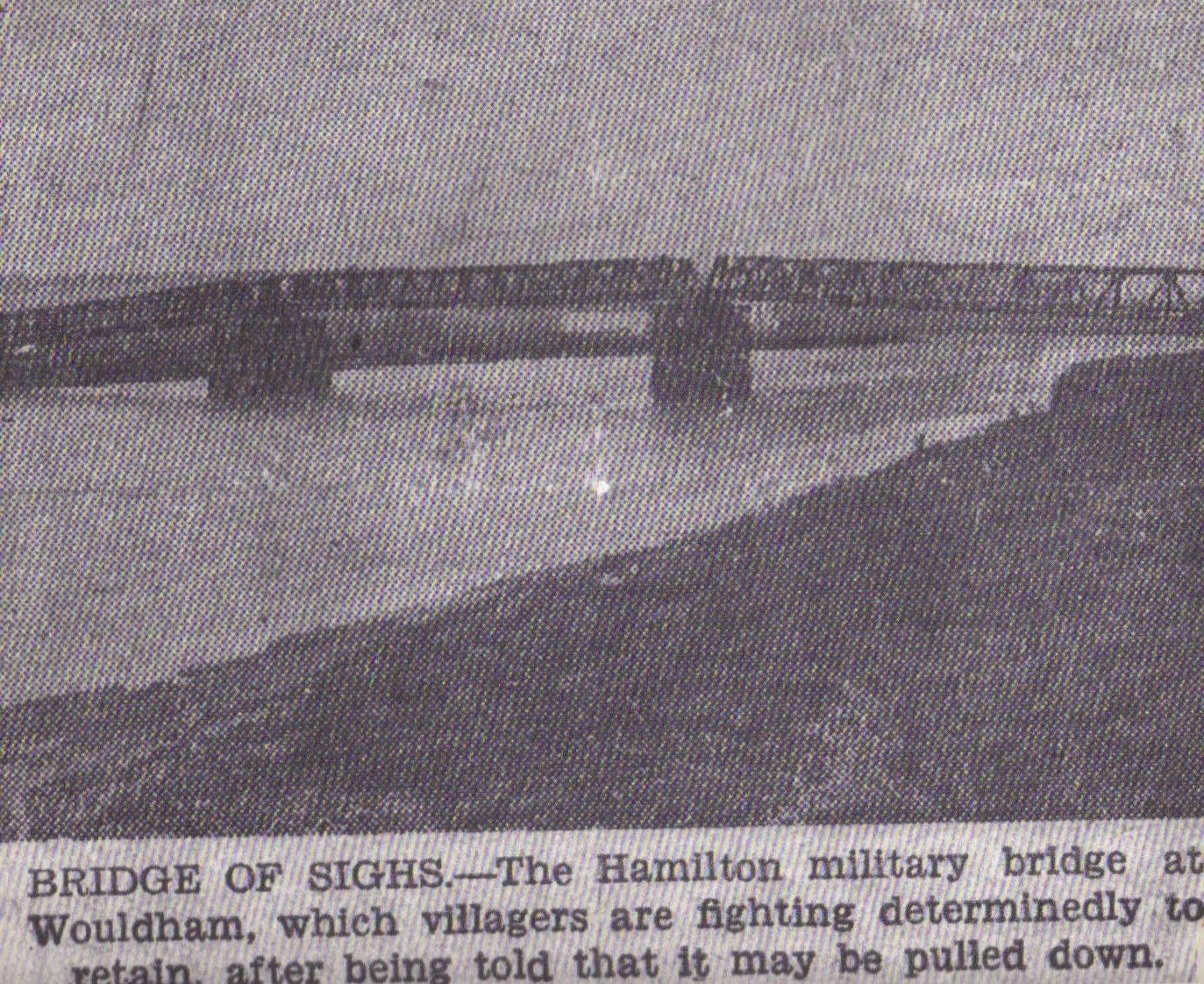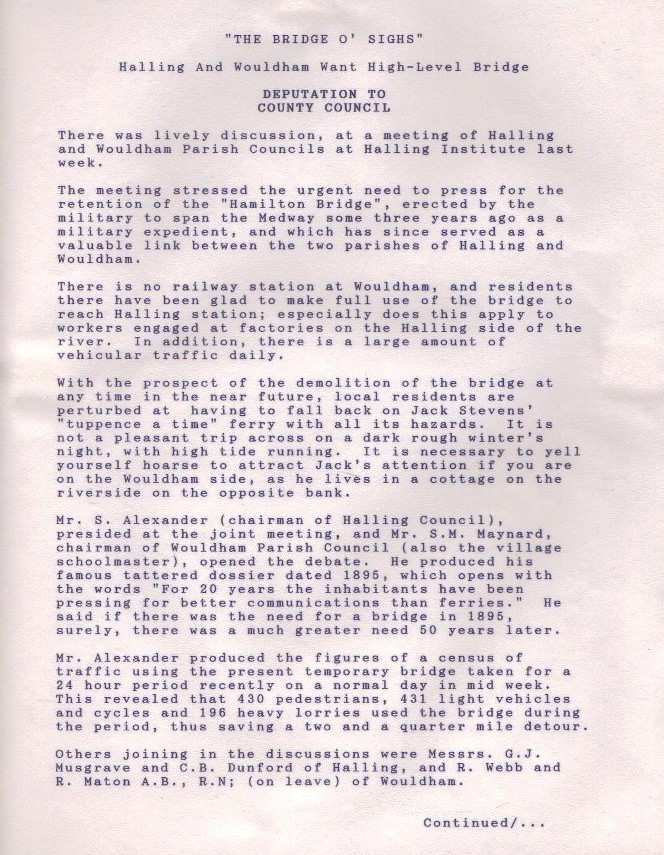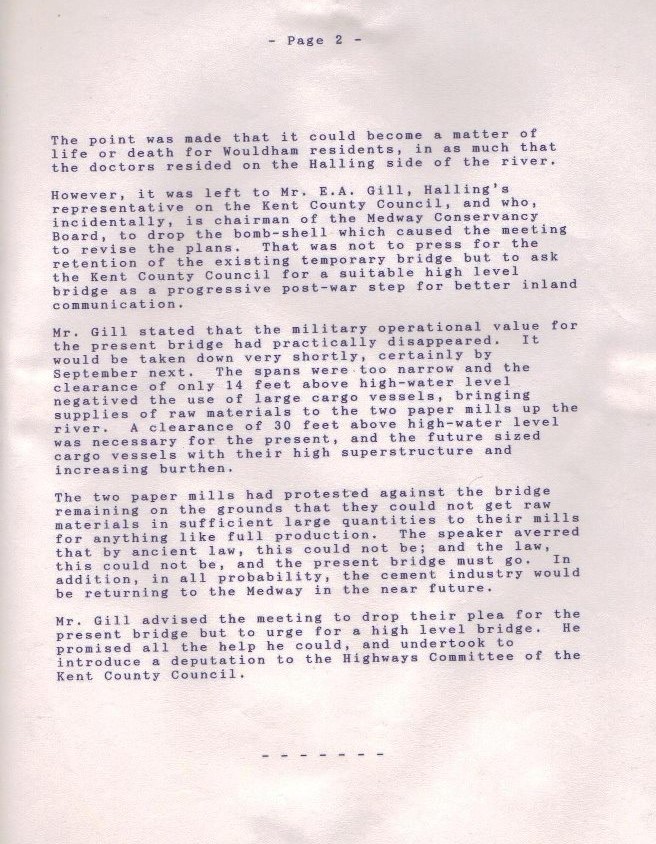World War 2 Bailey Bridge
The World War 2 Bailey Bridge across the River Medway between Halling and Wouldham
In 1941, during the Second World War, Royal Engineers stationed across the River Medway in their white tents at Kemfly Farm outside Wouldham, built a ‘Bailey’ bridge connecting Halling and Wouldham.
‘Bailey bridges’ were the design of a civil servant, Donald Bailey, in the War Office and were portable, pre-fabricated, metal truss bridges that could be transported in their parts across the battlefield then erected to cross rivers. Field Marshall General Montgomery said “I could never have maintained the speed and tempo of forward movement without large supplies of Bailey Bridging”. Seventy-five years on, modern versions are still in use by the British Army.
The Halling bridge provided one narrow roadway, wide enough for tanks to cross and had metal side girders, with a wooden base and metal side guards. It was located at the bottom of Marsh Road, Halling and had a simple system of red/green traffic lights at either end. Besides military use, civilian traffic could come and go across it freely.
One born-and-bred Halling resident, still living in the village, Norman Head (born 1936), has memories as a six year old of a tank crossing from Wouldham, driving up Halling High Street, then turning round and going back again. This was a time of double summer time, (ie clocks went forward two hours for British Summer Time to give farmers longer evenings for food production) and Norman recalls his mother and father taking him across to drink at the Waterman’s Arms in Wouldham High Street. Tugs on the Medway had to lower their chimneys to pass under the bridge.
Another long-time Halling villager, Phyliss Chidwick, (born In Wouldham in 1930, moved to Halling 1954) remembers soldiers marching over the bridge and also riding across in their DUKWs, which were American-supplied amphibious trucks. Phyllis reckons she would not have met her husband if it had not been for the Bailey bridge! Wouldham teenagers would cross the bridge and gather outside the shops in Halling High Street and there she met the Halling boy who she would marry. Phyllis recalls she had to be back home by 8.05pm otherwise her irate father would come across the bridge looking for her!
After the War, in 1946, the Royal Engineers offered to the Parish Council to leave the bridge in place. However, the paper mill owners at Snodland reckoned it was interfering seriously with their river traffic as it was so low. Their argument won the day for demolition. Now, the owners of Marsh Farm in Marsh Road reckon that some of the girders were upcycled to support the roof of one of their barns and remain there until this day.
Thus, Wouldham and Halling returned to their centuries-old separate existences with it taking either a twenty-five minute journey to get to each other via the Rochester or Aylesford bridges respectively further up or down the Medway; or with non-vehicle crossings possible using the five hundred year-old passenger rowing boat ferry which continued to be operated by the local Stevens family right up to 1964 from the bottom of Ferry Lane by Halling church. Then, nothing, until the new gleaming swish concrete bridge over the river opened in 2016 as part of the Peter’s Village development.



